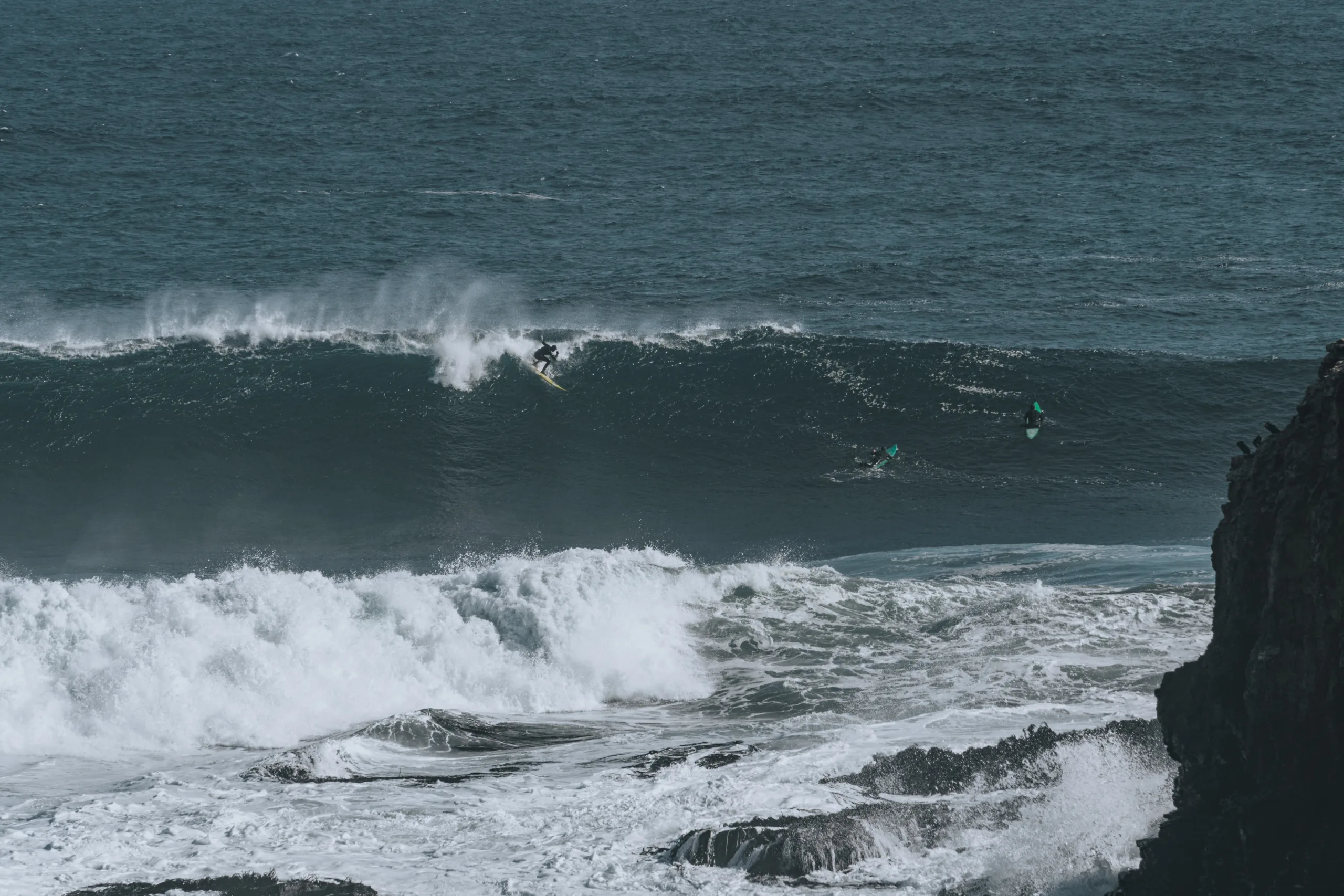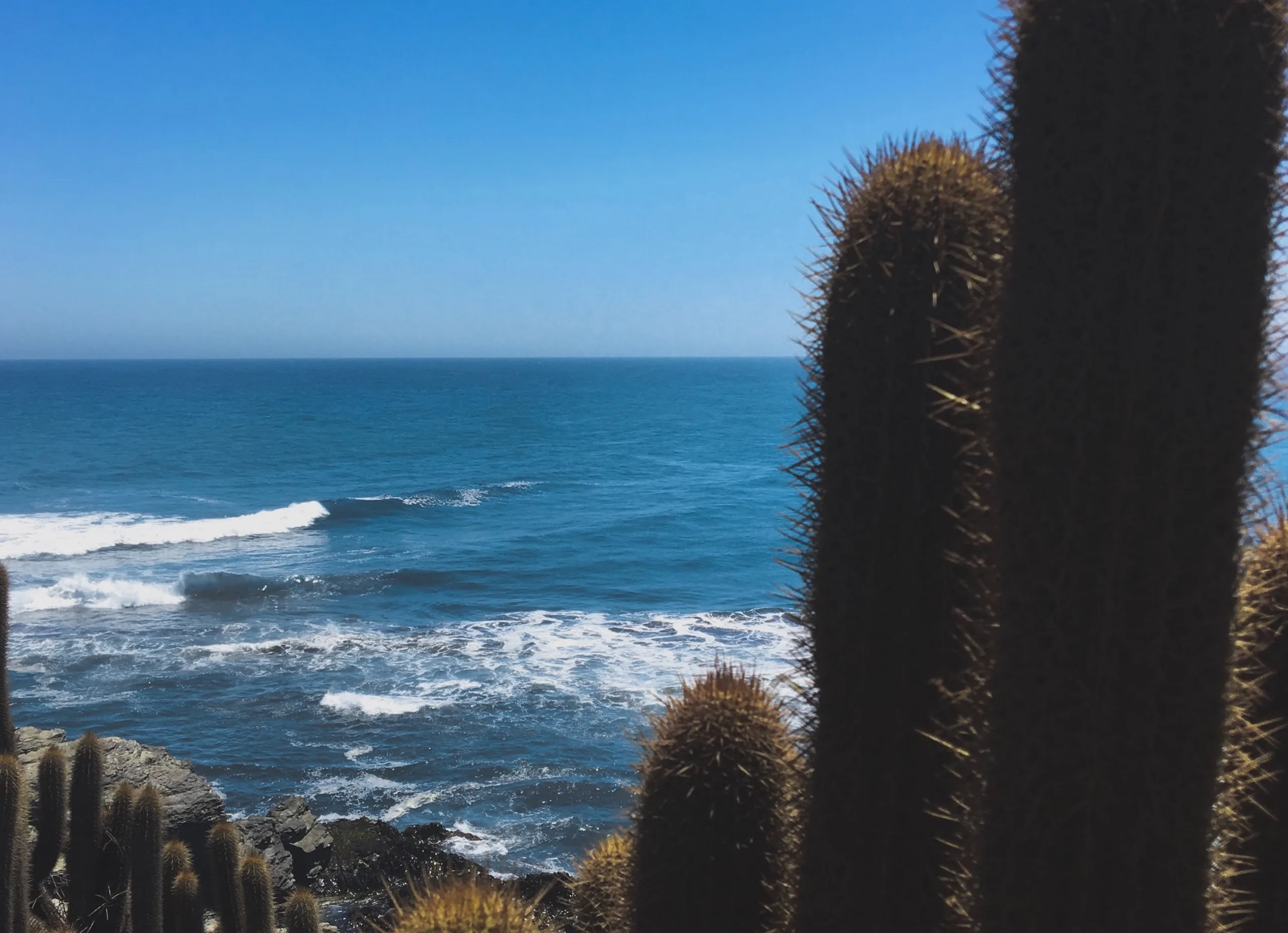Pichilemu is the capital of surfing in Chile. It’s the most well-established surf town in the country, famous for its showpiece break–Punta de Lobos. A cold water surf haven with a lot to offer in and out of the water. But Pichilemu’s draw doesn’t stop at the waves.
The town boasts several surf hostels, camps, and accommodations that will make surfing in this part of the world easy and comfortable. There is also a scattering of restaurants, cafes, and places to work and live the digital nomad surfing lifestyle. Here’s everything you need to know for surfing in Pichilemu.

Table of Contents
Pichilemu Surf Season
The best time of year to surf in Pichilemu is winter. Winter in Chile happens between April and October, this is when large south swells hit the coast from deep in the South Pacific. The biggest swells light up breaks such as Punta de Lobos light and it’s when the famous barreling left points further south start cranking.
But even outside of this season, the waves are incredibly consistent and you’ll find waves all year. Heck, even northern hemisphere winter swells reach this part of the world.
Pichilemu Surf Spots
Punta de Lobos
- Crowds: Crowded
- Best Swell: 2-20ft
- Best Wind: Offshore (East)
- Wave Type: Left point
- Consistency: 90%
- Hazards: Rocks, Crowds
Punta de Lobos is the most famous surf spot in Pichilemu. It picks up heaps of swell and is renowned for its huge left walls, and massive barrels with the infamous rock structure in the foreground. On smaller days, Lobos is slightly more user-friendly and becomes a fun point break with sections for turns and the odd tube.
Infernillo
- Crowds: Moderate
- Best Swell: 4-6ft
- Best Wind: Offshore (East)
- Wave Type: Left point
- Consistency: 70%
- Hazards: Rocks, Crowds
Closer to town, Infernillo is another left-hand point, and although it can look incredible from the shore, it’s always trickier and not as wally as it looks from the beach. A fat but super long left, in the middle of Pichilemu town.
La Puntilla
- Crowds: Low
- Best Swell: 2-3ft
- Best Wind: Offshore (East)
- Wave Type: Beach Break
- Consistency: 90%
- Hazards: Rocks, Crowds
Puntilla refers to the sand bar on the inside of Lobos. A great spot that can have fun peaks for advanced surfers out the back (I even got a wave from Lobos into here once) and on the snide, this is the best palace to surf in Pichilemu for beginners.
Where is Pichilemu?
Pichilemu is located in the O’Higgins region of southern Chile. It is around 3 hours from Santiago.
How to Get There?
The best way to get to Pichilemu is by car. You can hire cheap cars from Santiago Airport, with Discover Cars, and make the three-hour drive to the coast.
If you’re on a budget surf trip, you can take the bus from Santiago to Pichilemu, It’s pretty cheap and you can find routes and fares on BusBud. You can stay in Pichilemu (close to Punta de Lobos) and walk to the waves.
Getting Around
Getting around is straightforward. If you’ve got a car you can nip between your accommodation and surf spots as well as have the flexibility to head down the coast in search of some of Southern Chile’s top surf spots.
Where to Stay?
Chile certainly isn’t one of the world’s cheapest surf destinations, but thankfully, Pichilemu has several affordable surf hostels providing beds for less than $20 per night. Check out some of the best here.
Sirene Insolente
- Dorm Price: $12 per night
- Distance from Surf: 15 minute walk to Punta de Lobos
- Wifi: Excellent
- Type: Dorms & Privates
This is where I stayed for the majority of my Chilean surf trip and couldn’t recommend it enough. A wicked hostel with a co-work space, on-site surf school, hire shop, and kitchen. The dorms are clean, warm, and comfortable and prices start from $ 12 USD per night. Check out this property.
Tips for Surfing in Pichilemu
Cold
It’s no secret that it’s flippin’ cold in Chile. In winter, you’ll need a 4/3mm, boots and hood. Even in summer, you’ll need a 3/2 at least. It’s not warm, but if you’re prepared it’s not insanely cold either. I’d recommend the Billabong Furnace 4/3mm and boots.
Swell
Chile gets serious swell. And during winter it’s not uncommon for waves to be consistently in the 4-6ft range. In fact, you’re more likely to be waiting for the swell to drop rather than come up.
Locals
Like anywhere in South America, there is some strong localism in Pichilemu and across southern Chile, the top locals hold it down at the best spots, so always respect this. Most of Chiles’ best breaks are just crowded in general, and if you want waves to yourself, you’ll need to head off the beaten track to find them.

Enjoying this post? You might like my other guides, such as the complete guide to surfing in Chile. Or specific breakdowns like the ultimate guide to surfing in Southern Chile or my take on Arica.
What Else to Do in Pichilemu?
There’s some beautiful coastline in this region, but other than surfing, and/or living a digital nomad surfing life, there’s not a whole heap to do in Pichilemu. You come here to surf and soak up the laid-back Chilean surf culture. If you’re after other things to do in Chile, head to the Andes and go snowboarding, or head to Easter Island for a true surf adventure.
Final Words
Pichilemu is a fantastic base for anyone surfing in Chile and a must-do on any South American surf trip. With enough accommodations and amenities to keep you comfortable (and warm), you’ve got everything you need here, consistent waves, and with a car, the ability to head further south, deep into Chile to sample some lonely, cold (and pumping) lefts.
Pichilemu Surf FAQs
Pichilemu is famous for surfing and most notably the big wave pointbreak Pichilemu.
Drive from Santiago airport for 3 hours.
